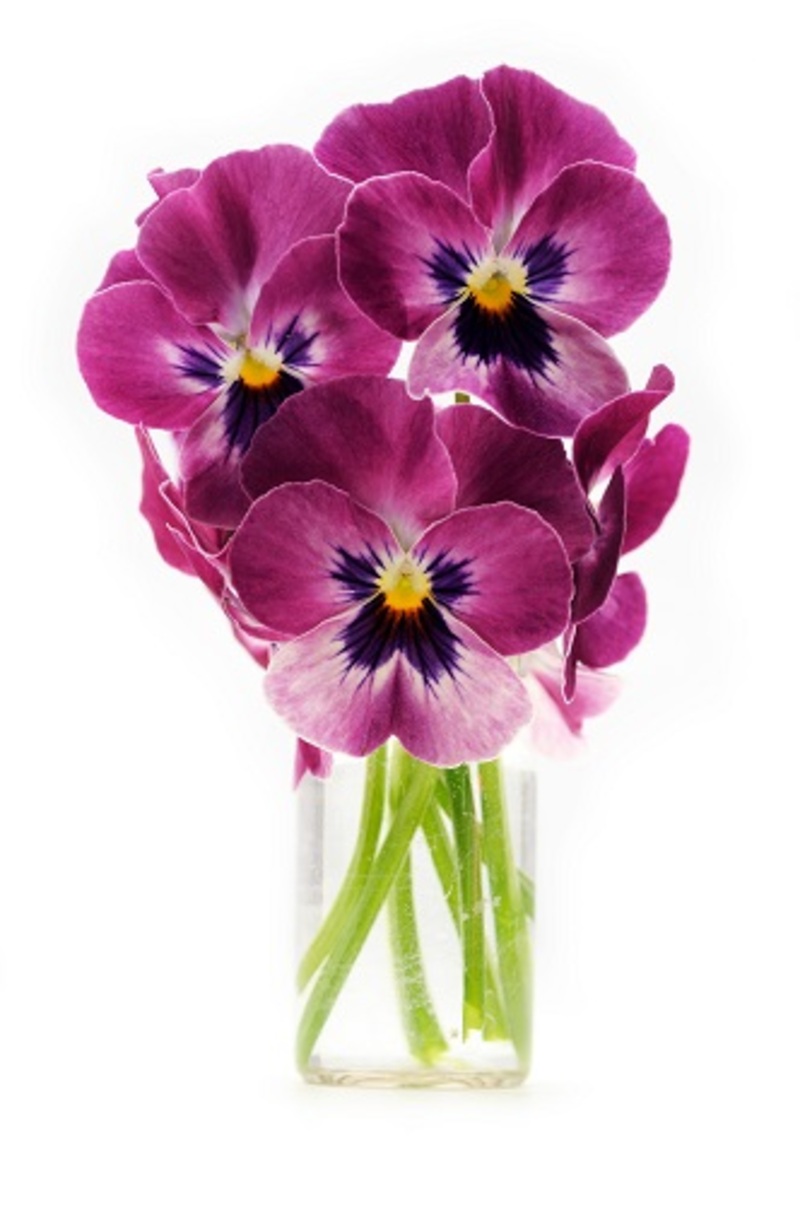Tulip Trivia: Seven Surprising Insights You Didn't Know
Posted on 25/08/2025
Tulip Trivia: Seven Surprising Insights You Didn't Know
Tulips have enchanted gardeners and flower lovers for centuries. These vibrant blooms, famous for their simple elegance and incredible diversity, are far more fascinating than most realize. Whether you're a tulip enthusiast or simply a curious reader, this comprehensive article uncovers seven remarkable tulip facts--revealing the rich history, biological quirks, and cultural significance of these beautiful flowers.

1. Tulips Did Not Originate in Holland
When the word "tulip" comes up, many people immediately picture the fields of the Netherlands, with miles of rainbow-colored flowers stretching into the distance. However, this association is a modern phenomenon. Tulips were not native to Holland!
The True Origin of Tulips
- Central Asia is the birthplace of tulips. Wild species are still found today in countries such as Kazakhstan, Uzbekistan, and parts of the Himalayas.
- Tulips grew naturally in the mountainous regions, often thriving in the harsh alpine conditions.
- They were first cultivated by the Ottoman Turks during the 10th century, quickly becoming a symbol of wealth and nobility in the Ottoman Empire.
This rich, exotic origin story paved the way for their introduction to Europe in the 16th century, eventually leading to the infamous Dutch tulip mania and immortalizing the flower in Western culture.
2. Tulip Mania: The First Documented Economic Bubble
Among all the intriguing tulip trivia, perhaps the most astounding is the "Tulip Mania" that gripped the Netherlands in the 17th century. The demand for rare varieties of tulip bulbs skyrocketed, fueling what historians believe to be the first recorded speculative bubble in economic history.
Highlights of Tulip Mania
- At the bubble's peak, a single rare tulip bulb could cost more than a house in Amsterdam!
- Speculators traded bulbs as financial instruments, often without ever actually seeing the flower.
- When the bubble popped in 1637, prices crashed, and fortunes were lost overnight.
- Though the impact was not as widespread as once believed, "tulip mania" remains an iconic example of mass economic hysteria.
This captivating episode is not just a footnote in financial history but also a testament to the extent of tulip fascination that swept across Europe.
3. Tulips Boast Incredible Diversity
Most people envision the classic, cup-shaped tulip in red, yellow, or pink. However, the tulip family is exceptionally diverse--offering endless discovery for gardeners and flower fans alike.
How Many Tulip Species and Varieties Exist?
- There are over 3,000 officially registered cultivated varieties (called cultivars) of tulips worldwide.
- Botanists recognize more than 75 key species and dozens of natural hybrids in the wild.
- Flower shapes extend from the classic cup to star-like, fringed, ruffled, or even double blooms resembling peonies.
Thanks to generations of selective breeding, the range of tulip colors, forms, and patterns keeps expanding. These innovations keep the flower among the world's most popular ornamental plants and a top choice for spring gardens.
4. Tulip Color Meanings: More Than Just Beauty
Have you ever wondered if different tulip colors carry special symbolism? Indeed, they do! The Victorians, in particular, attached deep meanings to the hues of this beloved bloom.
What Different Tulip Colors Signify
- Red Tulips: Romantic love and deep passion.
- Yellow Tulips: Originally symbolized hopeless love but today represent cheerful thoughts and sunshine.
- Purple Tulips: Royalty and elegance, reflecting their association with European courts.
- White Tulips: Convey forgiveness, purity, and peaceful intentions.
- Pink Tulips: Happiness, affection, and well wishes.
- Variegated/Striped Tulips: Historically stood for "beautiful eyes."
This flower's language is as rich as its colors, making tulips perfect for personalized gift bouquets and expressive garden displays.
5. Tulips Played a Role in Science and Art
Tulip trivia wouldn't be complete without a nod to the flower's surprising impact on scientific discovery and creativity.
Tulips and the Birth of Plant Viruses Research
- Some tulip varieties, especially the famous "broken tulips," feature dramatic feathered or streaked petals.
- For decades, these striking patterns mystified gardeners and botanists alike.
- Today we know they're caused by a plant virus (the "tulip breaking virus") that disrupts pigment distribution in the petals.
The study of these "broken tulips" was foundational in virology, eventually changing how scientists understood disease transmission in plants.
Tulips in Fine Art
- In the Dutch Golden Age, tulips featured in countless still life paintings by masters such as Rembrandt and Jan Brueghel the Elder.
- To this day, tulips remain an inspiration for modern artists, illustrators, and designers around the world.
These vibrant blooms continue to bridge the worlds of science and art, adding yet another layer to their enduring appeal.
6. Tulips Are Edible and Have a Survival Story
Did you know? Tulips are not just beautiful--they can also be edible! This unexpected piece of tulip trivia reveals how the flower has played a surprising part in human survival stories.
Tulips as Food?
- Tulip petals are non-toxic and can be used as a decorative, edible garnish in salads, desserts, and drinks.
- In times of famine, notably during the Hunger Winter of 1944-45 in the Netherlands, desperate citizens resorted to eating tulip bulbs when no other food was available.
- Though not particularly tasty (often described as bitter or starchy), tulip bulbs could be boiled, ground, or baked to provide sustenance.
Today, culinary use of tulips is primarily limited to creative chefs looking for novel garnishes, but the wartime story underscores the resilience and adaptability of both people and plants.

7. Modern Tulip Festivals: A Global Phenomenon
If you ever needed evidence of the tulip's worldwide popularity, look no further than the explosion of tulip festivals celebrated across the globe. These vivid springtime events attract millions of visitors and showcase the continuing cultural significance of the tulip flower.
Where Are the Largest Tulip Festivals Held?
- The Netherlands: The Keukenhof Gardens near Amsterdam hosts one of the world's most famous displays, with over 7 million bulbs blooming each spring.
- United States: The Skagit Valley Tulip Festival in Washington and Tulip Time in Holland, Michigan are major attractions.
- Canada: Ottawa's Canadian Tulip Festival celebrates the country's historic link with the tulip and draws international crowds.
- Turkey: Istanbul's International Tulip Festival reconnects the flower with its Ottoman roots and features creative public installations.
These glorious festivals not only showcase tulip variety but also foster international friendships and celebrate the arrival of spring.
Bonus Tulip Trivia: The Flower's Enduring Legacy
From wild Asian meadows to royal Ottoman gardens to bustling Dutch markets and global festivals, the tulip has left its mark on nearly every continent. Modern breeders continue to introduce dazzling new varieties, ensuring that the fascination and symbolism of tulips endure year after year.
In summary, whether you admire the biological marvel, delight in its role in history, or simply enjoy a colorful spring bouquet, there is always more to discover in the world of tulips. Next time you see a field of these blooms, remember these seven surprising insights--and share a little of this captivating tulip trivia with someone new!
Find More Tulip Facts and Gardening Inspiration
- Discover the latest tulip breeding trends and garden design ideas
- Explore more floral trivia, care tips, and spring bulb guides
- Plan a visit to a famous tulip festival near you
Tulips: They are not just flowers. They are living history, cultural icons, artistic muses, and--sometimes--unexpected sources of survival. The more you learn about them, the more magical they become.
Latest Posts
The Romantic Allure of Red Roses on Valentine's
Make Your Vibrant Blooms Last Longer with These Simple Tips
Tulip Trivia: Seven Surprising Insights You Didn't Know






